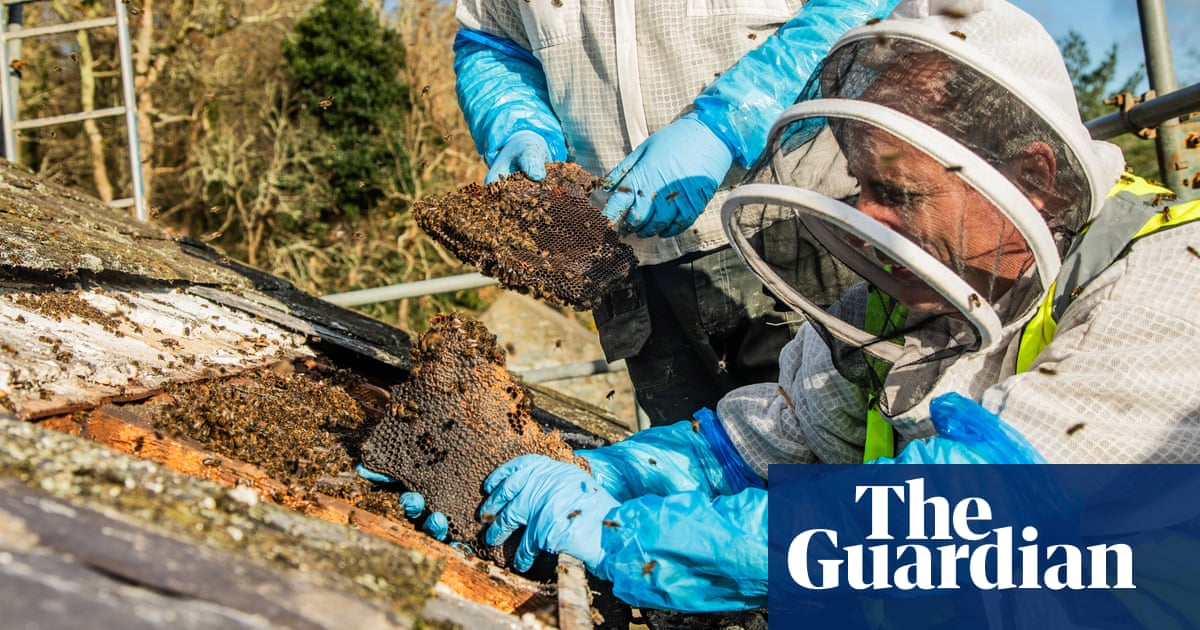
It is an exquisite example of Italianate architecture, filled with classical paintings, sculptures and antiquities. Many of its 55 rooms have hand-painted ceilings; in one, an intricately carved dado depicts mermen battling with sea monsters.
Kingston Lacy, a stately home built in Dorset in the 17th century and later remodelled as a Venetian palace, was acquired by the National Trust in 1982 and has 50 staff caring for its treasures. A tour of the house kicks off a six-part documentary on trust properties, National Trust Unlocked, presented by the architect George Clarke, starting on Channel 4 on Sunday.
But the television celebration of the National Trust airs as the institution itself has suggested that an “outdated mansion experience” serves only a “loyal but dwindling audience”.
An internal discussion document leaked last week said the trust should focus on its outdoor assets – which include 780 miles of coastline and vast tracts of woodlands, nature reserves and other open spaces – in a bid to “reach new audiences”.
The document, drawn up by Tony Berry, the trust’s visitor experience director, proposes putting thousands of artworks and other items into storage in order to “flex our mansion offer to create more active, fun and useful experiences”. Specialist exhibitions for “niche audiences” should be scaled back, and “new sources of experience-based income” developed.
The document’s disclosure drew furious reaction online. Some claimed the trust had “gone woke”. One member said the institution had been going downhill since the moment National Trust ties were no longer available in its gift shops. “From then on, one trendy liberal cause after another was adopted,” he added.
The trust swiftly denied it was dumbing down. In a statement it said: “We remain committed to, and passionate about, the country house and arts and heritage. We will not dumb down. We will always welcome the enthusiasts and the specialists and provide them with experiences that are tailored for their interests, such as at places like Kingston Lacy and Petworth, where we ensure those treasure houses are presented to the highest possible standard.”
But, it added, “we accept that the presentation of some of our houses can be improved and we need to make sure they are meaningful and relevant for the 21st century”. Its aim was to provide “a range of offers for different audiences, interests and needs”.
The National Trust for Places of Historic Interest or Natural Beauty, to give its full title, has become emblematic of the middle-class pursuit of culture, heritage and fresh air. The charity was founded in 1895, although its acquisition of stately homes only began after the end of the second world war. Last year, the trust had almost 6 million members – a number that has more than doubled over the past two decades – and 28 million visitors to its sites.
This year has been a different story. The Covid-19 pandemic meant a shutdown of its buildings and car parks, the cancellation of events and a virtual halt to membership recruitment. The trust is facing a loss of £200m, and is set to make 1,200 people – including specialist conservationists and curators – redundant.
To add to its woes, a report to be published next month is expected to say that a third of the trust’s stately homes – including Kingston Lacy – have links to slavery or colonialism. A working group will make recommendations on how to address the history.
According to the architectural historian Mark Kirby, the trust’s underlying concern is that its houses and art collections are seen as elitist. “Of course, in one sense they are right,” he said. “The houses were built for the elite, the collections were bought and put together by the elite.
“But the fantastic thing ... is that they’re not for the elite any more, they’re for everybody. We can all go in, we can all marvel at these fantastic artworks and architecture.
“Personally, I owe my love of architecture and art history to having been taken to National Trust houses as a child. It worries me a lot that that opportunity will be taken away, that houses will be closed [to the public] or open much more rarely, and that large parts of their collections will be put into storage. So people like me won’t have that opportunity to become enthused and passionate about the things the trust has in its custody.”
The trust’s leadership appeared “frightened of celebrating the inheritance they have. Some don’t appreciate its value”, he added.
Amy Boyington, another architectural historian, said: “The trust’s core membership will be very disturbed at this development. To say people are more interested in going for walks underestimates the British public. People are very interested in history and heritage.”











